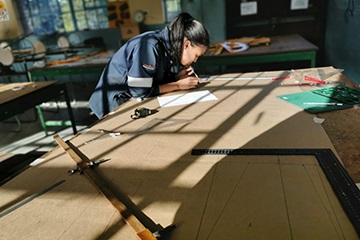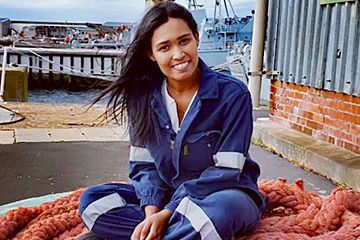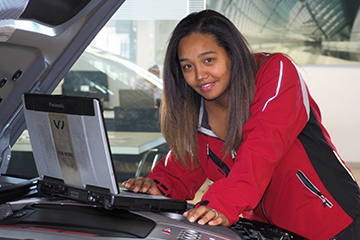Women changing the face of the South African labour market
 Women have made major strides towards gender equality and empowerment in the last few decades, but more still needs to be done.
Women have made major strides towards gender equality and empowerment in the last few decades, but more still needs to be done.
South Africa’s Constitution is recognised as one of the more progressive in the world. The rights of women and other marginalised groups are explicitly protected in our Constitution.
According to Statistics South Africa (Stats SA), the South African labour market is more favourable to men than to women. Men are also more likely to be in paid employment than women, regardless of race. Although South Africa has made some headway, gender representivity is still below the 50% mark for positions that come with a great deal of influence. According to data from the report Gender series volume I: Economic empowerment, 2001–2014, women comprised 32% of Supreme Court of Appeal judges, 31% of advocates, 30% of ambassadors and 24% of heads of state-owned enterprises. Stats SA’s Gender Statistics in South Africa, 2011 report indicates that, women were far less likely than men to be working as artisans/operators. When the report was published in 2011, men were still more than 4 times as likely as women to be in this occupational category.
More females are starting to pursue careers that were previously perceived as ‘work for men’. We spoke to 2 women who’ve made their mark in careers which were traditionally held by men.
Candra Pedro, South Africa’s first female shipbuilder.
Background
 Candra grew up in Bonteheuwel in Cape Town and is the youngest of 4 children. When asked how she became interested in shipbuilding, she responded, “My dad and my brothers are tradesmen. I grew up as a tomboy and loved working with my hands, even at a young age. Each of them being technical-minded made me fall in love with this industry, I wanted to be just like them, tradesmen and artisans.”
Candra grew up in Bonteheuwel in Cape Town and is the youngest of 4 children. When asked how she became interested in shipbuilding, she responded, “My dad and my brothers are tradesmen. I grew up as a tomboy and loved working with my hands, even at a young age. Each of them being technical-minded made me fall in love with this industry, I wanted to be just like them, tradesmen and artisans.”
Education:
She attended Spes Bona Technical High School and matriculated in 2010. She did woodwork in her civil technology class and learned to operate various woodworking machines. Her post-matric qualification wasn’t geared for shipbuilding but was still in the engineering field. She studied Multi-Disciplinary Drawing Office Practice, where the subjects are more focused for a draughtsperson. It covers mechanical engineering orientation, technical illustration, structural steel development, auto CAD 3D (a commercial computer-aided design and drafting software application). Mechanical engineering, civil engineering and electrical engineering are all auto CAD drawing focused. Her studies included structural steel and plating. These studies made adapting to the marine environment a little easier and assisted more with shipbuilding than she expected.
Career
Candra’s passion for shipbuilding stems from her love of creative pursuits such as drawing, singing and playing the piano and guitar. The highlight of her career was the day she finally qualified as a shipbuilder artisan.
“My trade is extremely masculine, in every way. One of my biggest challenges has always been my physical strength and stature. Regardless of the things that I can’t change, I’ve always worked around these obstacles and pushed to be the best version of myself. It's not easy, and I always need to remind myself that I’m able to do this. There are days where I’m reminded why this is a male-dominated field, but I never try to be better than the males in this industry. Instead, I continue to focus on where I can better myself even in the smallest of ways”, says Candra.
She would like to work and gain more experience in her field. She plans to study marine engineering and to become a Naval Architect.
Advice
Her advice to women who would like to pursue a career in this field is to be open-minded, to do their best and to give themselves time to grow. She says that you should never compare yourself to others but be the best version of yourself and to enjoy what you do.
Chelsea van Wyk, South Africa’s first female Audi Master Technician
Background
 Chelsea was born in Somerset West and is the youngest of 3 children. She grew up in Eerste River, Cape Town and she still lives in the same suburb. “I wasn’t interested in the motor industry until I started to understand how things work when I entered the industry. I just took a chance when I applied for an apprenticeship at Audi”, says Chelsea.
Chelsea was born in Somerset West and is the youngest of 3 children. She grew up in Eerste River, Cape Town and she still lives in the same suburb. “I wasn’t interested in the motor industry until I started to understand how things work when I entered the industry. I just took a chance when I applied for an apprenticeship at Audi”, says Chelsea.
Education:
Her high school subjects included physical science, geography, life science and pure maths.
She finished high school and then she started an apprenticeship at Audi Centre in Somerset West. It took 3 years for her to qualify as a motor technician and after that, she started the master technician programme.
Career
When she decided to enter the motor industry she wasn’t focused on the fact that it’s a male-dominated industry. She was more motivated to build a future for herself and earn a salary while studying.
“The proudest moment in my career has to be when I became the first female master technician in South Africa at Audi. I never thought I’d reach this milestone so early in my career”, says Chelsea.
The challenges in her career are when she forgets her physical limitations and lifts or manoeuvre in certain positions, putting a strain on her body.
She’s currently focusing on improving her technical skills as a master technician to be able to adapt in an environment that's constantly changing and evolving.
Advice
“My advice to young women interested in entering the motor industry is to always strive to make their goals a reality. Don’t be set back because it's a male-dominated industry but see it more as a challenge to stand out and be who you are meant to be”, says Chelsea.
If you’re interested in pursuing a career as an artisan or tradesperson, here’s a list of bursaries, internships and apprenticeships to help you:


